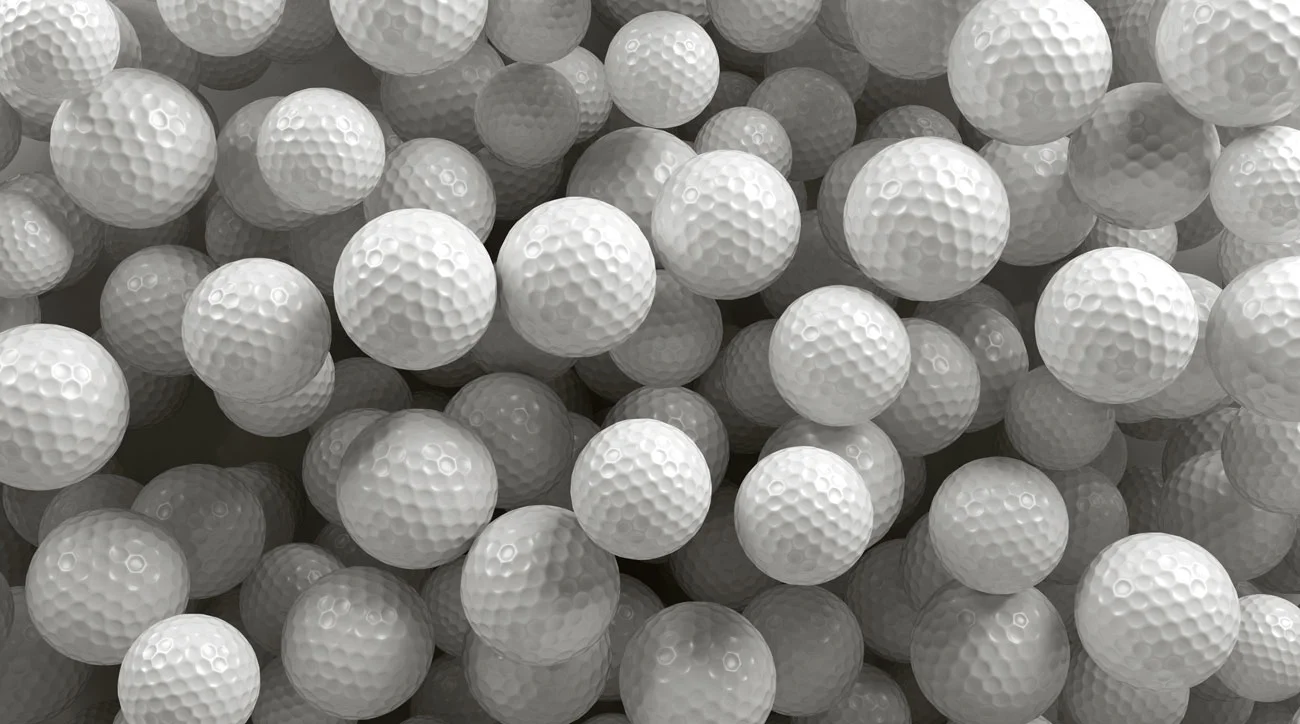Unveiling the Dimple Dilemma: How Many Dimples Grace a Golf Ball?
The dimpled surface of a golf ball is as iconic as the sport itself. But have you ever wondered exactly how many dimples adorn a golf ball? This comprehensive guide dives into the fascinating world of golf ball dimples, exploring their purpose, the number you can expect to find, and the factors influencing dimple design.
The Purpose of Dimples: Aerodynamics and Beyond
Dimples are not merely cosmetic. They play a crucial role in the flight of a golf ball by influencing aerodynamics. Here’s how:
- Reduced Drag: As the ball spins through the air, the dimples create a turbulent boundary layer around the ball. This disrupts the smooth flow of air that would normally create drag, allowing the ball to travel farther.
- Lift Generation: The dimples also contribute to lift, similar to the way an airplane wing functions. The specific dimple design can influence the amount of lift generated, impacting the trajectory and distance of the ball.
- Stability: Dimples promote stability during flight. They help the ball maintain a consistent spin, reducing wobble and erratic flight paths.
How Many Dimples? It Depends…
The exact number of dimples on a golf ball can vary depending on several factors:
- Manufacturer and Model: Different golf ball manufacturers utilize unique dimple patterns and quantities. Titleist, Callaway, and Srixon, for example, all have their own proprietary dimple designs with varying numbers.
- Performance Goals: The number of dimples can be optimized for specific performance goals. Balls designed for distance might have fewer, larger dimples, while those prioritizing control might have a higher number of smaller dimples.
- USGA Regulations: The United States Golf Association (USGA) regulates the design of golf balls, including limitations on surface texture. This ensures a level playing field and prevents balls with an excessive number of dimples from gaining an unfair advantage.
A Range, Not a Single Answer
While there’s no single answer to the “how many dimples?” question, here’s a general range to consider:
- Typical Range: Most modern golf balls have between 300 and 500 dimples. This range offers a balance between the aerodynamic benefits and the limitations set by the USGA.
- Fewer Dimples: Balls with less than 300 dimples are uncommon but might be used for specific purposes, like maximizing distance for long drives.
- More Dimples: Exceeding 500 dimples is rare due to diminishing returns and USGA regulations.
Beyond the Number: Dimple Design Matters
The number of dimples is just one aspect. Dimple design also plays a significant role:
- Dimple Depth: The depth of the dimples can influence the amount of lift and drag generated.
- Dimple Shape: Dimples come in various shapes, such as round, square, or teardrop. The shape can affect the airflow around the ball and impact its flight characteristics.
- Dimple Distribution Pattern: The arrangement of dimples on the ball’s surface is crucial. Manufacturers strategically place dimples to optimize airflow and achieve desired flight characteristics.
FAQ
- Do more dimples mean a better ball?
Not necessarily. The ideal number and design of dimples depend on the specific performance characteristics desired. A ball with more dimples might not always translate to better performance for all golfers.
- Can the dimples wear out or get damaged?
Dimples can become worn or damaged over time, especially with heavy use. This can affect the aerodynamic performance of the ball. Replacing a golf ball with excessive dimple wear might be necessary.
- Are there any golf balls without dimples?
Smooth golf balls exist, but they are not legal for professional play according to the USGA rules. Without dimples, they experience significantly more drag and wouldn’t travel as far as dimpled balls.
- How do dimples affect a ball’s spin?
Dimples can influence the ball’s spin rate. The specific dimple design can affect how the ball interacts with the air, impacting the amount of spin generated and how long it retains that spin.
- What are the latest innovations in dimple design?
Golf ball manufacturers constantly research and develop new dimple designs. These innovations might focus on reducing drag further, enhancing lift for specific shot types, or improving stability in windy conditions.
Conclusion: Dimples – A Testament to Design and Innovation
The dimples on a golf ball are a testament to the science and design that goes into modern sporting equipment. While the exact number might vary depending on the manufacturer and model, understanding the purpose and impact of dimple design empowers golfers to make informed choices about their equipment. From influencing distance and lift to promoting stability, these tiny indentations play a crucial role in the flight of a golf ball. As technology and research continue to evolve, we can expect even more innovative dimple designs to emerge, pushing the boundaries of golf ball performance further. So, the next time you grip a golf ball, take a moment to appreciate the intricate dimple design and the fascinating science behind it. After all, these tiny dimples are what make that satisfying “thwack” of a well-struck shot possible.






More Stories
Where are Anticodons Located
What Bender Am I
What goes Good with Pizza